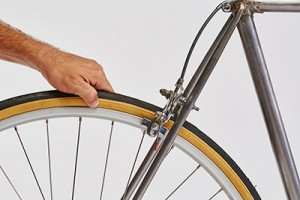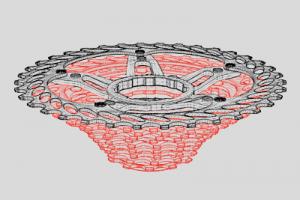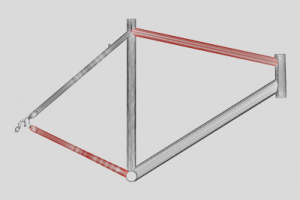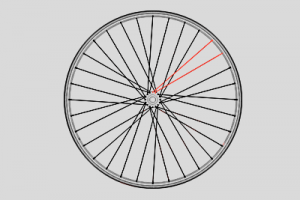MS Australia Puts Out an Owner’s Manual for ‘MS Bike’ and Anyone Willing to Take It for a Spin
Written by |

A bicycle specially designed to mimic the symptoms of multiple sclerosis (MS) now has its own owner’s manual, and the group behind the bike’s creation is inviting anyone interested to build their own experience of the spasticity and physical discomforts so well-known to people with the disease.
 The manual, which is available online, was produced by the nonprofit group MS Australia and released to mark World MS Day, which this year is May 25. It includes details of the bicycle’s components, accompanied by explanations of how each element — from the wheels to its frame, handlebars to its seat — were calibrated to replicate as closely as possible the physical effects of MS. The manual also includes “patient notes,” relating each of those features to the disease and its symptoms.
The manual, which is available online, was produced by the nonprofit group MS Australia and released to mark World MS Day, which this year is May 25. It includes details of the bicycle’s components, accompanied by explanations of how each element — from the wheels to its frame, handlebars to its seat — were calibrated to replicate as closely as possible the physical effects of MS. The manual also includes “patient notes,” relating each of those features to the disease and its symptoms.
This Bike Has MS, as it is called, already helped to raise over $350,000 in its March debut at the 10th annual MS Melbourne Cycle, a fundraiser for MS Australia. It will be back on the road for the 35th annual MS Sydney to Wollongong ride, scheduled for Nov. 6.
“This Bike has MS is starting new conversations regarding the symptoms of multiple sclerosis, it’s promoting the benefits of early diagnosis, and helping people living with MS gain access to vital early intervention services. The Bike has raised the profile on the need for more funding to help people with multiple sclerosis retain or regain employment,” Robyn Hunter, the chief executive officer of MS Australia, said in a press release provided to Multiple Sclerosis News Today.
early diagnosis, and helping people living with MS gain access to vital early intervention services. The Bike has raised the profile on the need for more funding to help people with multiple sclerosis retain or regain employment,” Robyn Hunter, the chief executive officer of MS Australia, said in a press release provided to Multiple Sclerosis News Today.
And, for World MS Day, the bike is a key participant at the Australian & New Zealand Association of Neurologists annual meeting, now taking place in Perth. The more than 300 doctors and others in attendance are welcome to take the MS bike for a spin, the group said.
 The genius behind the bicycle is not just in trying to replicate MS, but in intentionally working unsteady and discomforting features into each of its components. The bike’s ability to hug the road and respond to a rider’s commands is effectively disabled, much as a person’s ability to govern the simplest of movements is complicated by the inflammation MS unleashes in the brain and spinal cord.
The genius behind the bicycle is not just in trying to replicate MS, but in intentionally working unsteady and discomforting features into each of its components. The bike’s ability to hug the road and respond to a rider’s commands is effectively disabled, much as a person’s ability to govern the simplest of movements is complicated by the inflammation MS unleashes in the brain and spinal cord.
Features include wheels that are “untrue,” a heavier than usual frame to increase rider fatigue, a rear-gear cassette with missing teeth to mimic MS spasticity, and an ultra-thin seat cushion and handlebar tape — that masks ball bearings — to add a bit of pain to movement and motion.
The bike is a “terrible” thing to ride, the Grey Australia team that helped to build the bike for the Melbourne Cycle, said in a video about its creation. “Its gears are unpredictable, its frame off-balanced, and its brakes numb to press. This bike has multiple sclerosis.”
video about its creation. “Its gears are unpredictable, its frame off-balanced, and its brakes numb to press. This bike has multiple sclerosis.”
Indeed, the MS bike’s dysfunctions — which much like the disease are scarcely visible to the naked eye — help “both medical professionals and the general public … find a way of understanding the disease a bit more.”
The problem with MS, said Grey Australia, is that “people don’t understand why you’re sick, because you don’t look like you’re sick.”
Neither does the MS bike — until you climb aboard to ride it.





